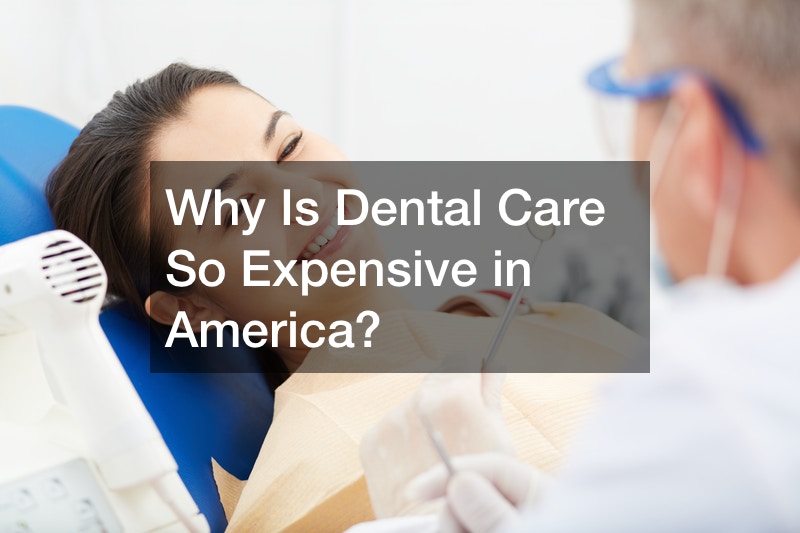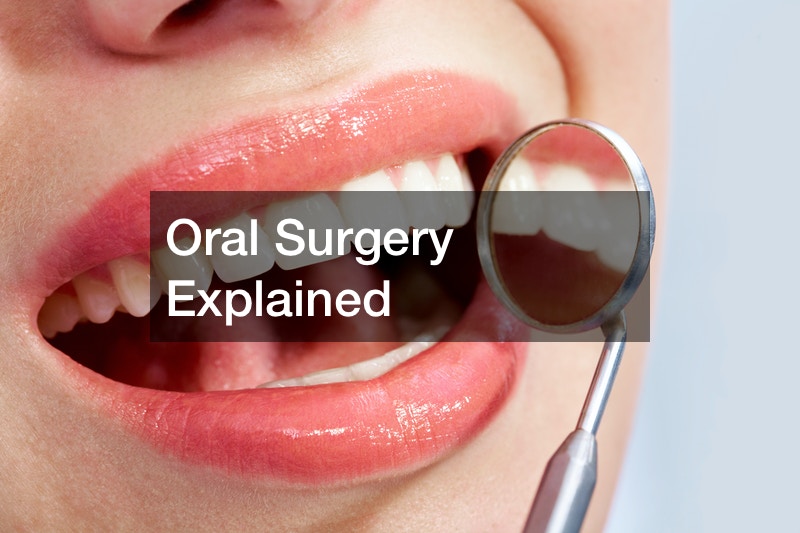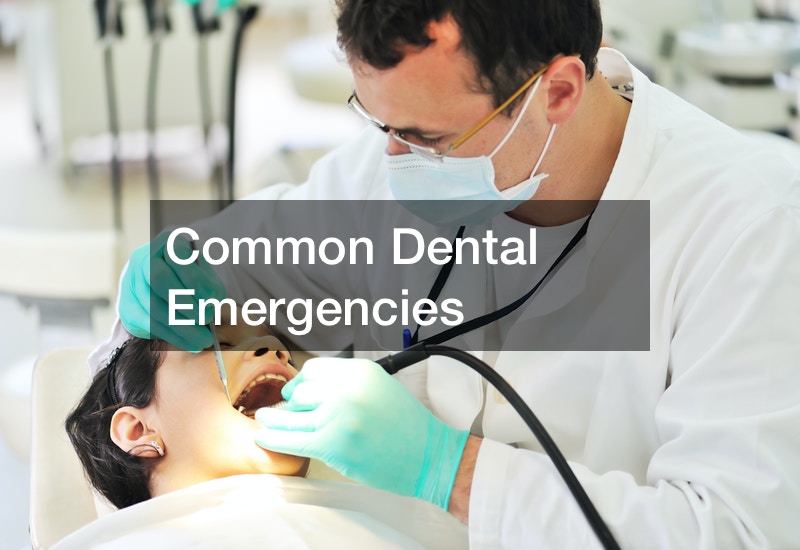
Dental services are some of the most important medical procedures anyone in the United States can get. It’s often not covered by regular health insurance, but by a different insurance provider. Therefore, many people are vulnerable to oral issues because they can’t visit a dentist at all.

There are several types of dental cleanings that can ensure the health of clients, so it’s a vital service. Dental problems can lead to bigger issues, so it doesn’t make a lot of sense that it’s considered separate from other kinds of healthcare. It shouldn’t be that expensive to get some types of teeth cleaning because it’s not just about aesthetics. You can get gingivitis or more even if you have good oral hygiene. Cavities are also a big concern. There are things only the dentist can get out and fix, and you shouldn’t worry about going bankrupt due to a dental appointment.
There’s nothing like the feeling before and after dental cleaning when your teeth are fresh and squeaky. People with braces have probably searched for “can you get a deep cleaning with braces?” If they don’t have insurance, it’s going to cost them a lot of money.
Let’s find out more about why dental care is so expensive.
The cost of dental care can vary greatly from one dentist to another. However, the cost of dental care is generally considered to be costly. Several factors contribute to the cost, including overhead costs, the cost of mortgage or rent for the premises, health insurance, taxes, equipment, payroll, and the cost of technicians who work on dentures, braces, and crowns. However, it’s essential to find affordable urgent dental care in case the need arises.

There are several places to look for an affordable walk in dentist. A dental school clinic is a great source of affordable dental care. Dental procedure fees at local dental schools are generally reduced, and patients only pay for the cost of equipment and materials. Some states also offer dental care assistant programs that offer services at subsidized costs.
Another great place where you can find an affordable emergency dentist is at a federally qualified health center. Most of these centers offer comprehensive primary dental care to patients. Families and individuals earning below 200% of the federal poverty level are eligible for discounts and can easily access after hour dental care. Some charitable organizations also offer affordable dental care.

Unfortunately, very few insurance companies offer appropriate dental healthcare insurance policies. Furthermore, those that offer have put certain limits that make it hard to afford complete dental care. However, there are ways to navigate dental health care without breaking the bank. First, it’s important to use the right type of toothbrush and toothpaste for you. Through an online search, you could know companies that sell the best toothbrush for elderly people, for instance. Also, you could search for the best toothpaste for severe gum disease. Only use brands that the relevant regulatory bodies have approved.
The best way to care for teeth involves avoiding eating sugary foods at night before bedtime. It’s imperative to note that simply brushing twice a day is not enough. How you brush your teeth is also important. The best way to clean gums involves using a soft brush that is gentle on the gums. Don’t brush the gums in haste, as this may lead to bleeding. Additionally, family dentists play an important role by ensuring your whole family receives affordable dental care. In most cases, your family dentist will perform most of the dental procedures, and a mode of payment is agreed on.
Navigating dental healthcare involves understanding your financial resources, product availability, and insurance parameters. You have so many options for ensuring proper dental healthcare.

Patients often ask, “How many teeth does an adult have? Most patients will have a total of 32 adult permanent teeth. However, the adults who have had their wisdom teeth removed will only have 28 teeth.
Individuals with relatively small mouths and jaws may not quite have enough space for a full 32 teeth. These patients might have issues with their wisdom teeth. That said, some adults will never have any problems with these additional teeth, and they’ll usually keep them.
The patients who take care of their adult teeth should be able to keep at least most of them throughout their lives. Many individuals can successfully maintain their teeth by getting regular dental checkups. Patients who stay away from sugary foods may also avoid certain forms of tooth decay in the first place.
People who are careful to clean their teeth each day will also prevent themselves from developing a wide range of dental problems. General dentists practices are continuing to change. Dental professionals are finding new ways to help patients preserve their adult teeth throughout their lives.
What is good oral hygiene? While that question may seem like something that should be common sense, there are times in which ways to improve dental health are not taken as seriously as they should be. When this happens, dental disorders, and dental health issues, can take place. Now; one may be asking. Where can I find a high-quality dentist service me? Or better yet, where are affordable dental plans near me? When it comes to an orthodontic service, such as national dental chains, such as those in Boise, healthy oral hygiene should not just be assessed, whenever one has a cavity. Instead, people should visit yearly, so that they can assess the health of their teeth, gums, etc. For example, sometimes people can have issues with slow tooth decay. As such, what should be done is an assessment of the teeth and gums that dentists can look at. In short, dentists can show individuals how to clean teeth without brushing, while they show patients how to clean tooth decay. There are also books on how to get your teeth clean, other names, “How to deep clean my teeth”, etc
Although all healthcare in America is noticeably expensive, dental care is one area that remains highly inaccessible to millions of people. Not only does the lack of dental care in America lead to an increase in oral health issues, but significant problems can also impact other organs such as the heart, causing even more life-threatening problems. To help you understand just how significant this problem is, here is what you need to know about the state of dental care in America.
Dental Care: Luxury or Healthcare Necessity?
The lack of dental care in America isn’t anything new. In 2010, over 181 million Americans avoided heading to the dentist due to both anxiety and cost of care. While some of the most basic procedures such as cleanings and fillings may be affordable for some Americans, anything more significant, such as root canals or orthodontics, remains out of reach and unaffordable even if they are recommended.
If you ask why dental care is so expensive, you’re likely to get numerous different answers and a lot of finger-pointing. While we’ll go more in-depth on this later, some of the most common reasons include alleging that the healthcare providers themselves are to blame, touting that because America has such a skilled medical workforce, the services they provide are more expensive. However, this does little to benefit the folks who need dental care, as most would be happy with supposed ‘low-quality’ care as opposed to ‘high-quality’ care that they can’t access anyway.
On the other hand, some people point to insurance companies as being the cause behind the expensive costs, stating that it is these companies intentionally drive up the cost of care in order to make having insurance a necessity whereby they can acquire more money for themselves. However, even with an insurance policy provided by a new career or purchased independently, there are many procedures that aren’t covered as they aren’t seen by insurance companies as being ‘essential’. One example of this is cosmetic dentistry.
This leads to the debate about what constitutes dental necessity and dental luxury. While what is and isn’t covered by insurance will vary depending on your plan and company, many won’t cover preexisting conditions and exclude things like implants which aren’t seen as being necessary. In addition to this, many come with an annual maximum, meaning that they will only cover procedures up to a certain cost, after which you will need to pay fully out of pocket. Around half of all dental PPOs only offer annual maxims of less than $1,500, meaning the costs can quickly add up for patients. For example, if you need a bridge, the average cost is $1,500 to $5000, depending on the type you select. If your annual maximum is only $1000, you’re going to be paying for a lot on your own, which leads to a lot of people just forgoing treatment altogether. For this reason, revitalizing treatment remains out of reach for many Americans who simply can’t justify choosing between dental care and paying their bills.
The Cost of Care and Dental Tourism
The lack of dental care in America is a pandemic in and of itself. It is estimated that 74 million Americans don’t have dental insurance, and this can be largely attributed to both price and the fact that it remains separate from general health insurance. Because of this, it’s worth considering the cost of care for the millions of Americans who don’t have the — albeit small — safety net that dental insurance can provide. To help provide contrast to these costs, let’s compare the cost of some of the most common dental treatments available in America and Costa Rica.
- Dental Crowns: In the United States the average cost of a dental crown is $1,200. In contrast, a dental crown costs about $350 in Costa Rica.
- Root Canals: In the United States a root canal can set you can $2,200, while in Costa Rica the average cost is $750.
- All-On-Four Implants: All-on-four implants in the United States can cost upwards of $26,000, while in Costa Rica they cost only around $10,500.
- Dental Veneers: Dental veneers in the United States average $1,245, while in Costa Rica they only cost around $438.
The reason why the cost of care in America is contrasted with the costs in Costa Rica is that dental tourism to the country has skyrocketed in recent years. Most notably is the dental office started by Patrick Goodness, a Wisconsin-based entrepreneur who moved to Costa Rica and founded Goodness Dental, which has since been ranked as the number one clinic in Costa Rica. Global Clinic Rating, an international accreditation organization, has even ranked Goodness as one of the top 10 dental clinics in the entire world.
When it comes to the lack of dental care in America, dental tourism provides one solution, as individuals traveling to Costa Rica stand to save between 50 to 70% on top-quality dental care. This is notable if you consider that America often touts itself as a country offering the best medical care possible.
Advanced Dental Care, Third World Statistics

Despite the number of skilled healthcare providers in America, one look at the dental care system and you may mistake it for something from a ‘third-world’ country, where only the most well-off are able to afford access. In fact, a study conducted from 2011 to 2012 found that America was in the middle of a dental care crisis, and when compared to the rest of the world, it came in third behind Kenya and Columbia in terms of needed dental care. Tooth decay and gum disease appear higher in America than many others due in large part to the higher consumption of sugars and processed foods. 1 in 10 Americans were even found to forgo dental visits altogether.
This study found that while America does in fact have advanced dental care and a lot of skilled practitioners, the percentage of people who forgo the dentist or are otherwise uninsured contributes largely to the negative statistics that help place America very low among other countries of the world.
The Damages of Expensive Dental Care
The lack of dental care in America harms everyone, both young and old. Consider how dental problems can impact speech in developing children, making both orthodontic treatment and speech therapy necessary. However, while insurance can help cover the cost of speech therapy, there can be a lot of expensive and time-consuming hoops to jump through in order to get approved for coverage. If the problem is severe enough to create a significant disability, some parents may even have no choice but to employ disability attorneys in order to get the help they need.

The same goes for braces and other rehabilitation services to help align the jaws and teeth so that speech isn’t as impeded. Even if braces are partially covered by insurance, their cost can be as high as $1,500 to $3,750. Without insurance they can even cost up to $7,500, making them unobtainable to low-income families. Some insurance companies can even place limitations on things like medical imaging, meaning patients could be limited in the number of x-rays they are covered for in a year.

These high costs for something so essential can be particularly concerning, especially when you compare them to other medical treatments such as cryo lesion removal, which at its lowest can cost only $100 to $200.
As people get older, the dental inequality gap widens even more, especially among those struggling with incomes, a percentage of people that is constantly growing larger. This also contributes to a lot of medical problems as tooth problems worsen without treatment, leading to a greater risk for advanced decay, gum disease, and infections. Bacteria from poor dental care can also lead to numerous other medical problems, including cardiovascular disease, respiratory infection, and even adverse pregnancy outcomes such as low birth rate and preterm birth.

Lack of dental care in America can also impact employment, contributing to unemployment and therefore poverty. In a study of focus groups based in Massachusetts, it was found that many Medicaid recipients had untreated dental issues and were living with a lack of self-esteem. This takes a toll on employability and reduces motivation to interact meaningfully with others. Along with this, it was also found that for people over the age of 18 who were employed, 1.9 days of work were lost per 100 employees. This creates an interesting paradox where people with dental issues are encouraged to find jobs to obtain insurance and income. However, the same group of people is simultaneously considered less employable, leading to a further lack of access to oral healthcare.
Dental Care and Mental Health
Despite dental insurance not being grouped with general medical insurance, even though it impacts both physical and mental health, the correlations cannot be ignored. Along with potentially causing devastating physical problems, the lack of dental care in America can also contribute to an increase in mental health problems, particularly depression. Research has found that individuals with dental issues such as decaying or missing teeth are much more likely to be more self-critical, self-conscious, and have depressive thoughts.
Along with this, insurance that only covers tooth extractions, as opposed to restorative options and preventive care, can increase the stigma associated with missing teeth, further increasing lower self-esteem and image in individuals with few other options.
Why Is Dental Care So Expensive?
Now that we’ve dug into the ramifications of the lack of health care in America and the turmoil surrounding it, let’s look more closely into just why the costs are so expensive to see if anything can be done.
One of the most commonly cited reasons is administrative costs creating excessive medical spending. For example, the United States spends about 8% of all healthcare spending on administrative costs, while other countries average between 1 to 3%. These high costs come from the convoluted system that includes various forms of insurance, plans, regulations, coding, and billing stipulations. Because nothing is streamlined, more administration is required to sort through the system.
In addition to this, the cost of care is rising while prices vary wildly due to a lack of set prices that allow providers to charge whatever they want with few limitations. Due to the lack of drug price regulation, the U.S. spends more per person than other countries, and those without an insurance company to negotiate affordability are left unable to afford care.

Along with this, many dental professionals also make more than professionals in other countries, meaning that prices need to be adjusted in order to provide adequate compensation. While you may think that the solution to this is paying professionals less, the ever-rising cost of living makes this a non-sustainable plan.
Additionally, the technology and IT access needed in many dental clinics cost much more in America, meaning that centers have little choice but to pass the cost on to patients. This also goes hand-in-hand with the lack of regulation in regards to medications and medical technology, which is impossible to change without a significant overhaul of the medical system.

What Needs to Change?
The lack of dental care in America is significant and, without change, it is something that will only continue to get worse. However, as demonstrated in nearly every election, changing any medical legislation is exceptionally difficult as affordable practices are often dreamed too difficult to exist in America. In order to rectify the lack of dental care in America, additional government regulations are needed to ensure that treatment costs cannot be manipulated on a whim. An overhaul of the insurance system is also needed so that everyone can receive equal access to the dental care that they need. Although programs like this have been proposed, there still has yet to be one that wholly benefits all Americans. Until steps like this are taken, the lack of dental care in America is poised to continue creating a gap between the wealthy and the low-income.


